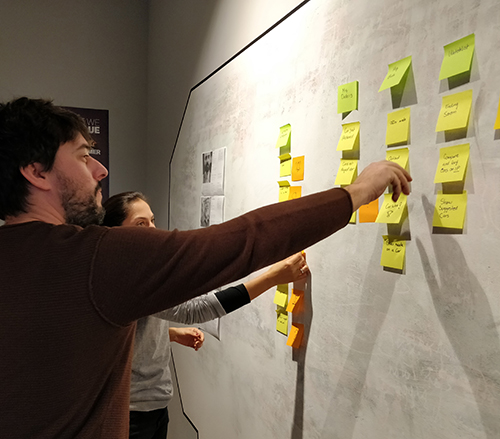Designing experiences or altering behaviour?
Why understanding your users is so important
A designer’s job isn’t just playing around with pixels. Behind many digital products, there is a long road and a lot of thought put into it. It is not only about styling and making things look good, but it is about reframing problems and guiding people to a series of experiences aiming to improve their lives. These experiences are designed for people so that they can use products in an easy and pleasant way.
A product can be a total failure or a success depending on the experience users have with it. If it happens to be a successful case, the experience may eventually turn into a habit, which will make people eventually come back for more.
There are many methodologies and resources that can be applied in order to design good products and ensure good experiences. But before applying any of those methodologies, designers should always start by asking these two fundamental questions: how things work and for whom is the design for.
How things work is the question that leads to understanding the market landscape, find room for improvement and new opportunities. And For who is the other question that leads to understanding the target audience and empathise with it. After all, one of the roles of user experience designer is to understand the user and meet their needs. Therefore, designers should be able to ask and get answers to these questions. UX designers who don’t know their user should not call themselves UX designers; it would be something like a product designer without a product.
 In a perfect work scenario, user experience designers should be able to do user research and figure out how things work. They should also be able to test what they have designed; validate their hypothesis, create adequate information architecture and take founded design decisions.
In a perfect work scenario, user experience designers should be able to do user research and figure out how things work. They should also be able to test what they have designed; validate their hypothesis, create adequate information architecture and take founded design decisions.
Many products fail because companies do not acknowledge the value of design and don’t integrate human behaviour as part of their product development, while others companies have understood the value of it and are gaining insights from their users and leveraging from it.
This is why product design is more than pixels and pretty interfaces, it is about deeper psychology and the need to understand people’s itch or motivation. As already mentioned, a good experience may eventually turn into a habit. So no wonder forming users habits is one of the major concepts connected to product design.
I have seen many designers, including myself, spending hours exploring the best ways to enable users to perform their tasks avoiding extra effort and friction, without necessarily knowing about cognitive psychology. Interestingly enough, the stimulus to a habit like cognitive ease can be artificially created, as recently read in “Thinking, fast and slow” by Daniel Kahneman.
For example, by repeating something over and over again, you can create a sense of familiarity and overall feeling of goodness. Putting this into practice would be something like, –if you master the principle of less effort, you will create a habit in your users and they will see your product as intuitive and easy to use.
The Cognitive psychologists define habits as “automatic behaviours triggered by situational cues”. These situational cues can trigger external and internal responses, and these are used by many companies to hook their users up.
The Cognitive psychologists define habits as “automatic behaviours triggered by situational cues”
Cognitive psychology is a fascinating field and being able to understand human cognition and applying into the design process can make a positive change in user experience. Knowing the cognitive limitations and capabilities of users can help us improve experiences and design better interfaces. But while putting all these into practice I always find myself asking the same question and facing the fine line between designing better experiences and altering behaviour. Because in the end, isn’t guiding people to meet our ends in mind a form of manipulation?.
While most designers are aware of these techniques and apply them consciously throughout the design and development of a product, others misuse and abuse them. This is where we as designers should be able to identify the correct use of deeper psychological tendencies and avoid manipulating human behaviour for a goal. We have a huge responsibility and should use the power of habits for good. Engage people in something important and meaningful, to be more connected, productive, healthier and happier.
